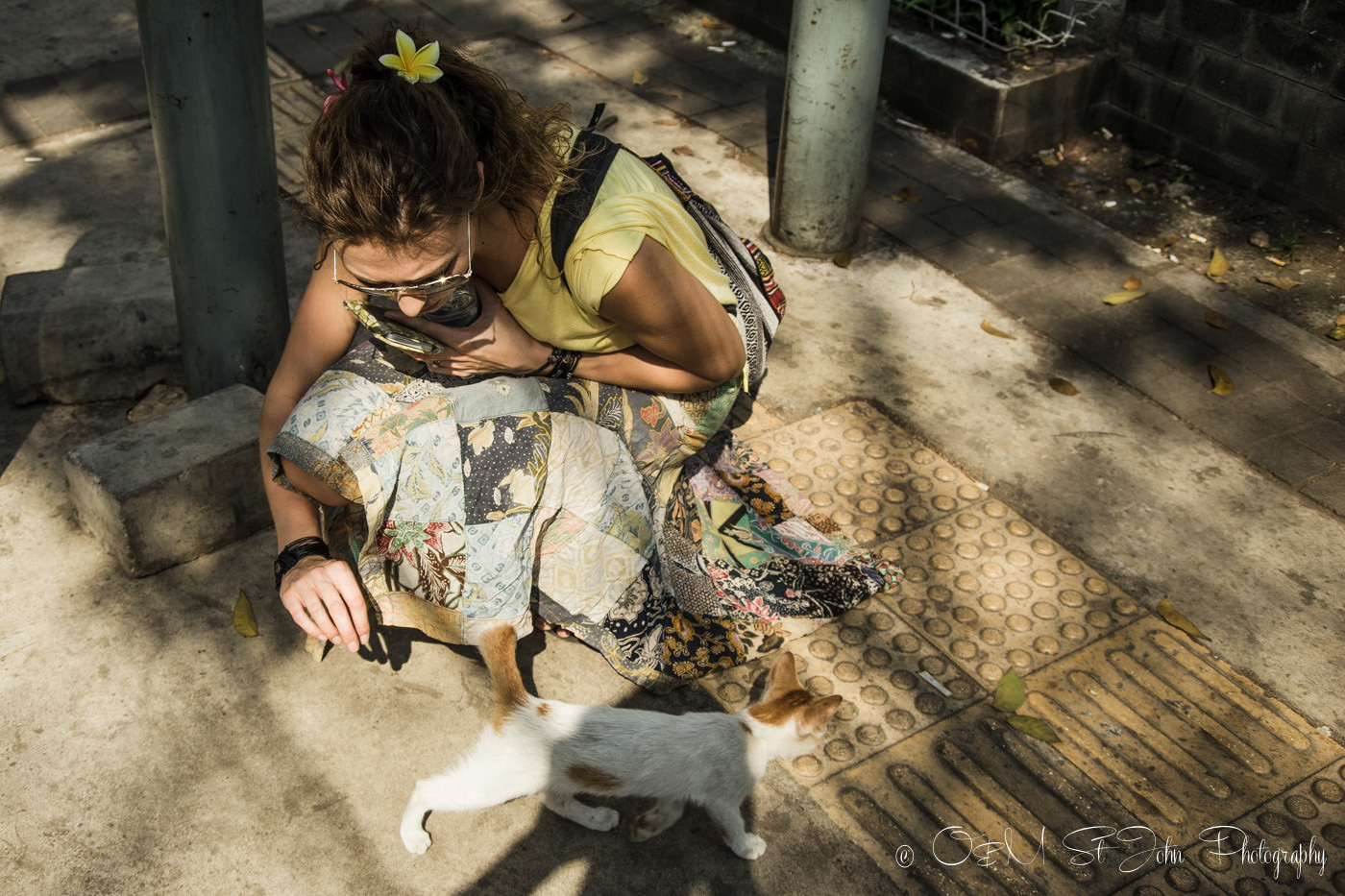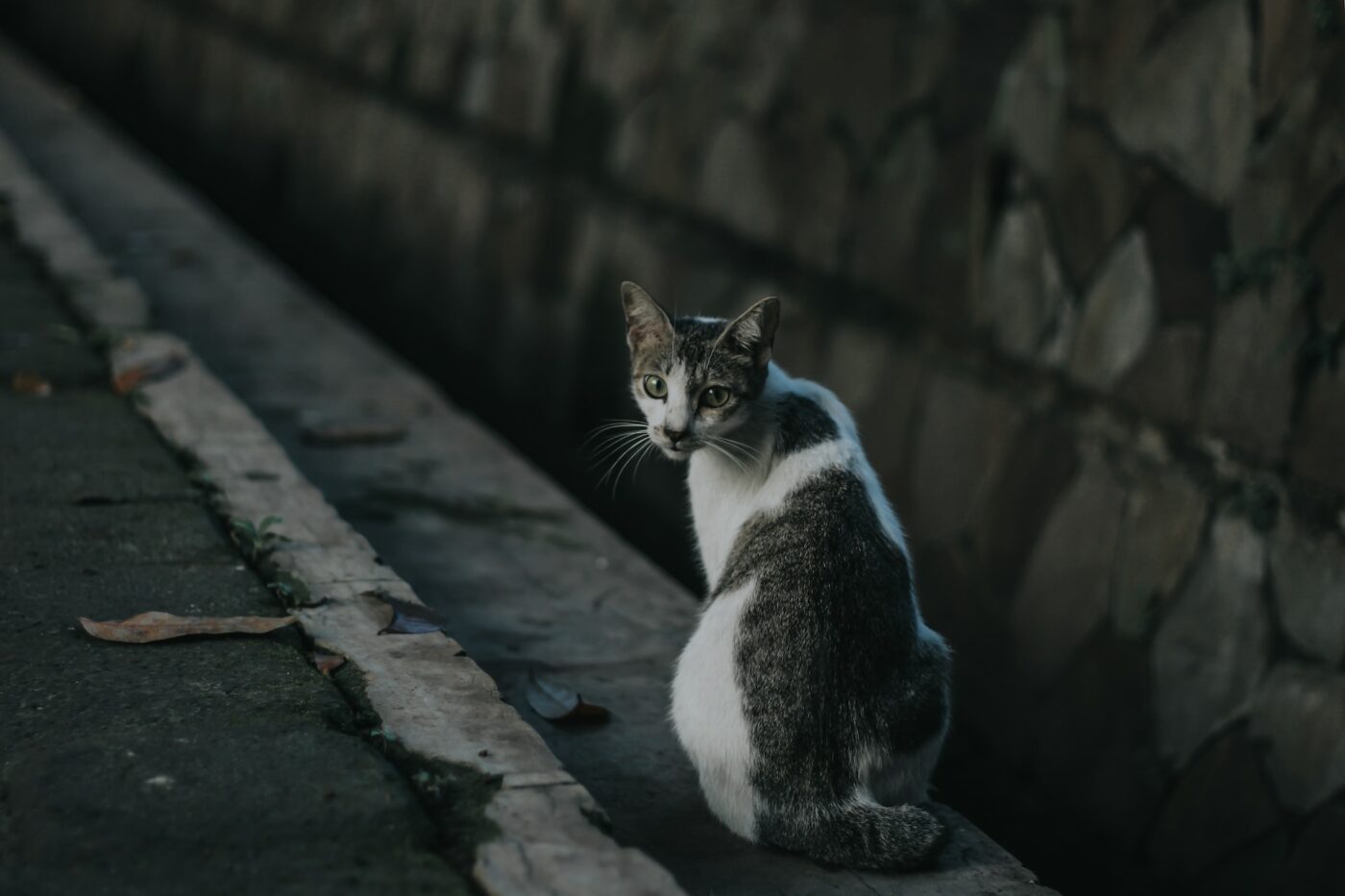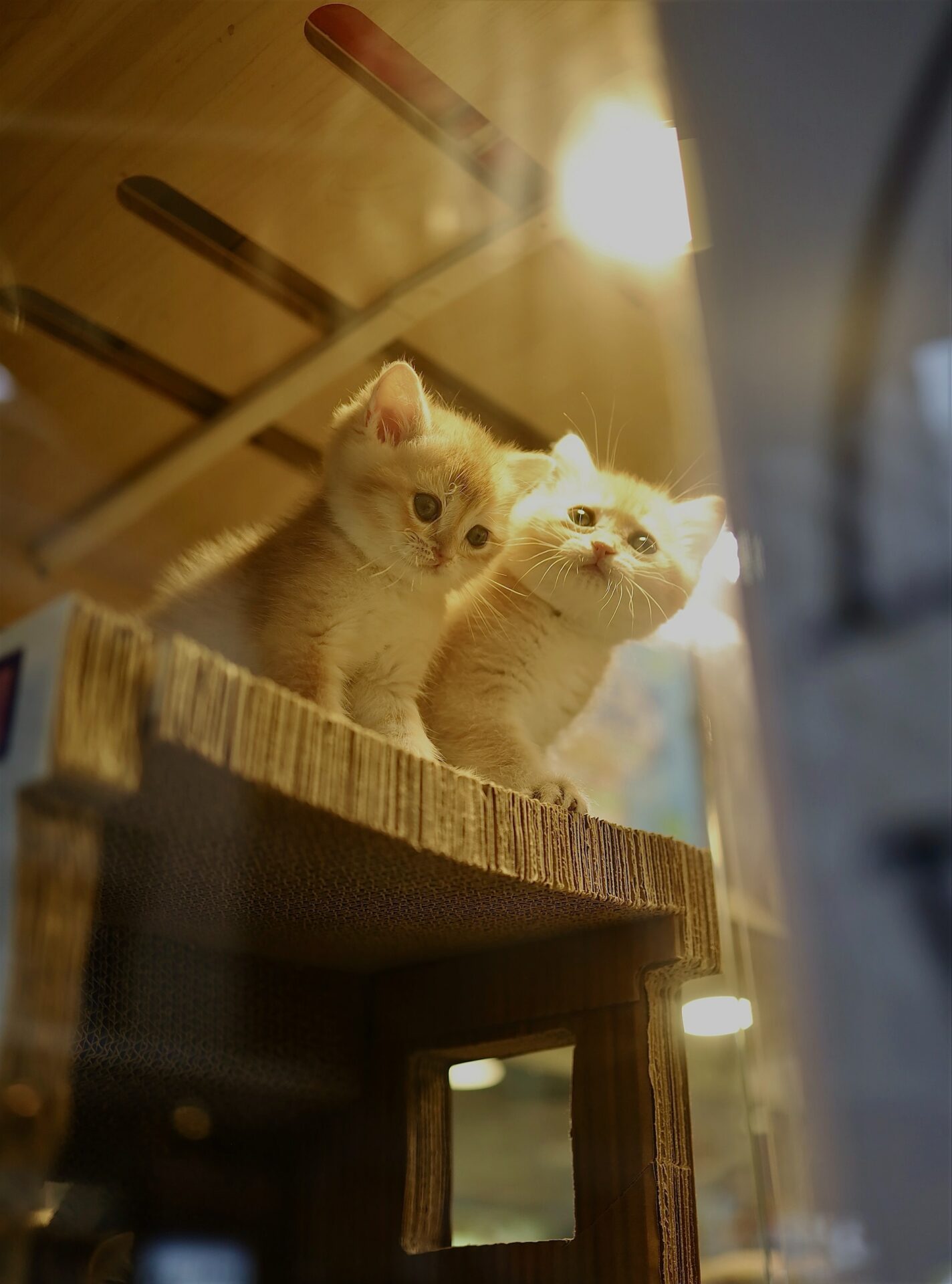“Do cats in your country have tails?” asked Indah, our guide at the Wonosara Tea plantation.
*This post may contain affiliate links, as a result, we may receive a small commission (at no extra cost to you) on any bookings/purchases you make through the links in this post. As an Amazon Associate, we earn from qualifying purchases. Read our full disclosure
She seemed stumped by our inquiry about why cats in Indonesia have stubby tails. The question has been bugging us since Day 1.
Stray cats were everywhere in Jakarta, Jogjakarta, and other cities in Java. At first we thought they were victims of accidents, run over by scooters that fill the streets. But after seeing dozens of cats with stubby tails, the theory seemed less and less plausible.
“Sometimes Indonesian housewives cut the tail of stray cats so they don’t come back to their house,” Indah said after a few minutes.
I didn’t want to believe it.
A few more conversations with locals and some further online research eased our worries. Turns out, stubbed tail cats are an actual breed of cats common not just in Indonesia but also in Malaysia and other countries in Southeast Asia.
So, let us unpack our research and share some of the most interesting insights!

Traveling Soon? Here is a list of our favourite travel providers and accessories to help get you ready for your upcoming trip!
Cats in Indonesia
There’s just no avoiding cats in Indonesia. Walk down the street, and you’ll come across a friendly feline welcoming you to the kampong, from orange tabbies to ones with taffy-colored fur to kittens with coloured markings. And while they might look like your ordinary cat breeds at first glance, one thing that sets an Indonesian cat apart is their distinct, short tail.
Cultural beliefs and local preferences have made cats generally popular and widespread around the country.
In ancient Javanese and Balinese cultures, the cat was believed to have mystical powers and was seen as a symbol of good luck and prosperity.
Meanwhile, ancient Muslims believed that the cat was a good omen that played a role in a person’s afterlife. The notion that cats must be respected and treated well has been passed on from one generation to the next, creating a very colourful and unique feline culture in Indonesia.
The Tale of Stubby Tails
Bumps, kinks, crooked, or stubby—Indonesian cats teach us that tails come in all shapes and sizes. These can range from a small, almost unnoticeable bump to kinky or crooked ones to stubby tails that end with a round, ball shape.
They might look disproportionate as compared to ordinary cats with long or “complete” tails or the breed standard, but rest assured, there’s nothing wrong with them. That’s just the way they’re born! With their soft, silky coat and large, curious eyes, they function just as any cat with a regular-sized tail would.
The tail is an extension of a cat’s spine and spinal cord. In terms of bodily function, it helps keep a cat balanced and flexible, which they use when climbing and jumping around. Apart from this, a cat may also use its tail to tell their owner how they feel. A straight tail means a cat is happy, while a curved, question-mark-shaped one means the cat is feeling playful. It’s an amazing way for cats to communicate with humans.
But what about stumpy tails? Overall, a short-tailed Indonesian cat’s hunting abilities and survival instincts are good. There’s even a local belief that a cat with a short tail is highly intelligent and is more efficient at hunting for rats, to the delight of its lucky owner.

Indonesian Cats: Historical and Cultural Significance
Just where did the rare, short-tailed Indonesian cat come from? Tracing its long history takes us back to a lot of different and amazing stories, ranging from religious beliefs, myths, folk tales, and local superstitions.
Muslim Belief
Muslims have always admired the cat, and historians documenting the ancient Muslims near Tomini Bay in Indonesia highlight their special appreciation for the animal. They even have a specific set of beliefs on how cats should be treated. These rituals and practices were considered sacred, as Muslims believed that cats played a key role in one’s destiny in the next life. As a soul makes its way to cross the bridge to the afterlife, it is written that a cat is the animal that stands watch.
Chinese Myth
Meanwhile, a Chinese myth believes there is only enough space in heaven for perfect creatures. Cats were considered a perfect species. However, if all cats were allowed in heaven, they would occupy all the space. So their tails were cut off, giving them one imperfection, thus creating the breed of the tailless cat.
The Princess
A folk tale tells the story of a princess who wanted to wash her hands in the river but didn’t want her rings to get wet. She had nowhere to leave her rings, but luckily, a cat was around and offered her its tail. Selfless and affectionate, the cat chose to kink its long tail so the princess’ rings would not get wet.
The King’s Cat
In another tale, it’s the King who is paired with a loyal cat. The cat attempted to protect his royal owner from a cup of poisoned tea, but the clueless King was set on drinking it. With no other choice, the cat then wrapped its long tail around the cup to stop him. But the persistent King yanked it off with so much force that the cat’s tail broke loose. With the tail still wrapped around the cup, the tea spilled over and revealed the poison.
Local Beliefs
Up until today, there are still local beliefs and superstitions that influence the way cats are treated. For instance, they say that if you run over a cat and don’t bury it, your car will explode! Needless to say, humans have always cared for their feline friends, and it’s a practice that has been deeply rooted in Indonesian culture.

The Evolution of Tailless Cats
The evolution of stubby tail cats takes us all around the world with more stories about the origin of the Indonesian cat–from Japan to America.
Cats with short or kinky tails were first spotted on ships that sailed the spice route, passing through the Middle East, India, Indonesia, Singapore, and then to China. It’s said that the cats on these ships must have started the “founder effect,” which happens when a new population is created by a group with a specific gene variation—in this case, their distinct, kinky tail much shorter than the breed standard. Because only a few of these cats bred with each other, the gene had a very powerful effect.
Breeds of Tailless Cats
Today, there are tailless breeds all over the world – not just in Asia. Some of these breeds include the Japanese bobtail, the Mekong bobtail, the American bobtail, the Chinese shorttail, the Manx cat, and the Cymric cat, among others.
These cat breeds might have intersected at some point in time, being part of a family with a short, crooked, or stumpy tail, but how they made their way to Indonesia is another story altogether.
Some believe that Indonesian cats are cousins of the true Siamese cats, a breed that originated in Siam or modern-day Thailand. Like their Southeast Asian family, their bodies are narrow and flexible, and they have square muzzles, small feet and hind legs that are longer than their front legs. Of course, that stubby tail is also a trademark of the Siamese cat.
Another story dates back to the Japanese occupation. During that time, a rat infestation broke out across Indonesia, and there weren’t enough cats. So, the stories say, they imported cats from Japan that had unique, bent tails, most likely referring to the Japanese bobtails. Soon after the Japanese bobtail reached Indonesian soil, they eventually bred with local cats, passing on their family trait to the domestic cats in Indonesia today.
Whatever breeds the rare Indonesian cat truly originates from, a big factor that has also influenced their growth is local preference.
Some Indonesians believe that short-tailed cats are better at hunting rats, and so they are seen as useful pets for humans who want to keep rodents away. This also offers a great incentive for breeders to keep rare, short-tail cats around.

The Truth: Why Indonesian Cats Have Stubby Tails
Myths and folk stories aside, the most logical explanation behind the length of these cat tails boils down to genetics and inheritance. The short tail is known to be a recessive gene that must have been passed on from one generation of Indonesian cats to another.
According to research by the French veterinarian Arnaud Demarti, it’s the HES7 gene that causes short and kinked tails in Indonesian cats, their Southeast Asian neighbours, and even the more popular tailless breed, the Manx cat.
Inbreeding also allows this gene to be passed on from one generation to another, and given that city cats don’t travel too far, they may breed with other tailless cats, giving the trait to a new batch of kittens and continuing the cycle.
Unfortunately, inbreeding does come with its fair share of disadvantages. Sharing the same traits and shorter spines means these cats are more likely to suffer from similar health problems.
Manx Syndrome, named after the Manx cat, refers to problems that occur because the spine and spinal cord are shortened. These primarily include the function of the hind legs, urinary bladder, and colon. The good news is that not every Manx cat, or every tailless cat for that matter, suffers from this. The severity depends on how much the cat’s spinal cord is affected: one short-spined cat may have mild symptoms or even no health problems at all, while, sadly, another cat may be heavily affected.

Protecting Domestic Cats & Stray Cats in Indonesia
A playful, highly intelligent, and affectionate breed, the tailless Indonesian cat definitely carries a lot of character and has become somewhat of an icon in the streets of Indonesia.
Sadly, this breed also faces its own challenges. Cat breeding is largely uncontrolled in Indonesia, with a large number of the cat population made up of strays. And while it’s good that there are many of these affectionate cats roaming around, the overpopulation of stray cats is an ongoing issue that the government has been trying to manage.
Too many stray cats pose a big safety hazard to the community, especially in cities like Jakarta and Petamburan, which have the most strays. Dogs aren’t as popular in these areas, so cats pose the biggest threat for spreading diseases like rabies.
Fortunately, there are numerous local and community efforts to keep the cat population at bay. Government vets and “cat catchers” go out at least twice or thrice a week to rescue and neuter strays in an operation known as TNSR (Trap/Neuter, and Spay/Return). There are also private citizens doing their part in their own community, like the Petamburan “crazy cat woman” who rents two flats–one for her, one for her rescues–as well as a suburban housewife in Parung who opened her door to 250 strays.
There is also no shortage of animal welfare groups across Indonesia who plan events, organize group efforts, and offer other services to give these animals a better life. In Jakarta, Jakarta Animal Aid Network advocates for animal welfare and is committed to improving the lives of Indonesia’s animals, including domestic cats and stray kittens.
In Jogjakarta, AnimalFriendsJogja runs several campaigns to help all sorts of animals, as well as opportunities to sponsor, adopt, volunteer, or participate in their Spay & Neuter programs. Bali also has a kitten sanctuary called Villa Kitty that helps rehome the strays in the island.
Meanwhile, in Gili, inbred, tailless cats are protected by groups like Cats of Gili and Luni Lombok Cat Café, Shop & Veterinary Clinic, the first and only veterinary clinic on the island. As the name suggests, they even have a cat café where customers can spend time with these playful cats. Proceeds go to free treatments and sterilisation for the strays, as well as other affordable services for pets.
So there you have it! While it may be true that some cats lose their tails thanks to the angry Indonesian housewives, and some may in fact lose it as a result of an accident like being run over by a scooter or the like, it sounds like the majority are simply born this way.
Have You Ever Encountered Cats With No Tail?
READ NEXT: 2-Week Indonesia Itinerary


Indah was just joking with you heheheh xD
I am an Indonesian myself and this case has kept me wondering since genetic class in High School. Luckily, I’ve found your article, thanks! And I also read another article some times ago about Japanese bob-tailed cats that was brought to Japan from SEA region some centuries ago. I think they may have a strong link with Indonesian snubby-tailed cats. =^v^=
My travels to Indonesia this week (3.8.19-3.18.19 (for work)) brought me to Japara. Jakarta-Cirebon-Semarang-Jepara-Semarang-Jakarta-Tokyo-Boston! I stayed at a beach resort and made friends with quite a few little furry bob-tailed beach dwellers. They were friendly beelined for me out of the three I was there with. I just wanted to know why all of them had the same tail! I wish I could post a video and pictures with them.
Aw how funny!
oh dont worry, i think the non pure-bred cats with incomplete tails outnumbered the ones with complete tails in Indonesia! my house is a kind of shelter and we have cats with tails of various length and shape lol. some have natural kink at the tip and looks like someone has cut it, but no they’re just naturally that way
That’s great to know! Thanks for the confirmation!